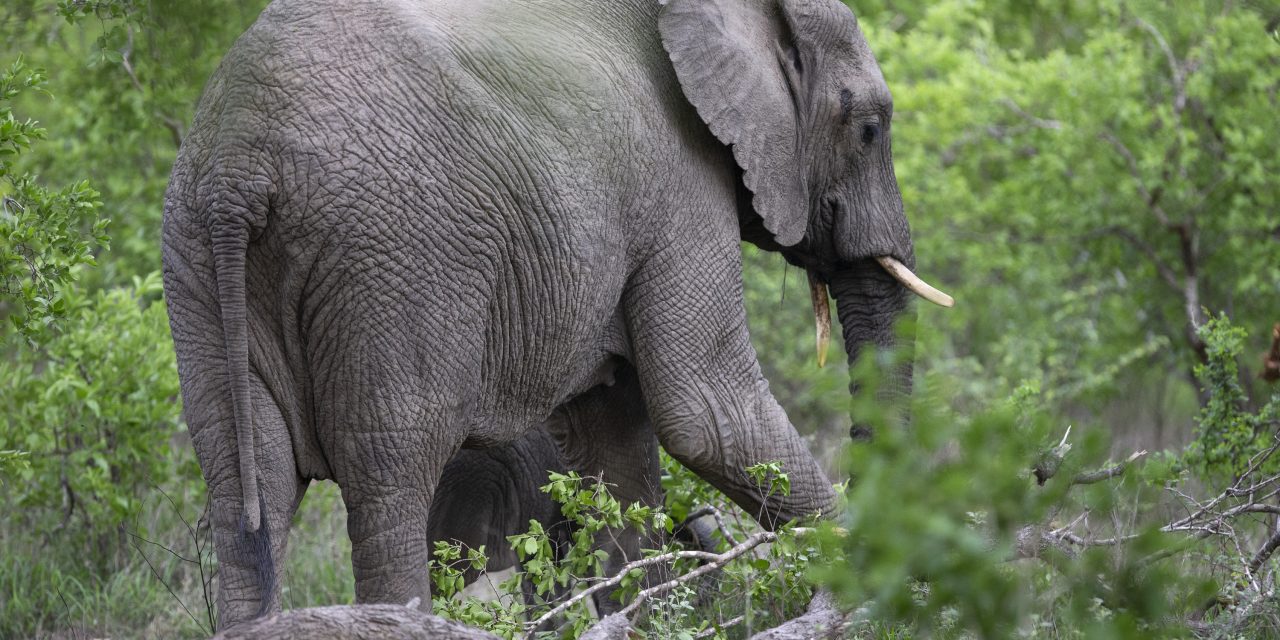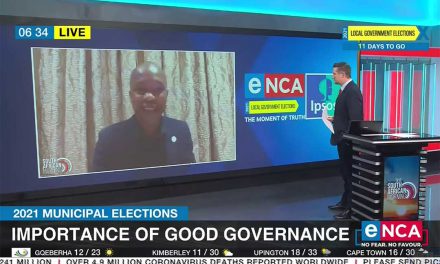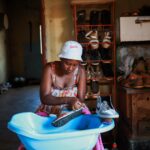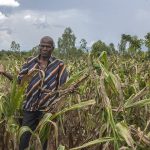If you’ve had a conversation with anyone recently returned from the Kruger National Park (KNP), you’re likely to hear: “It was lekker, but there are too many elephants! The damage to the trees is crazy.” The idea is often linked to thinking that suggests we should cull elephants as a ‘necessary evil’ to manage numbers, and that we should reopen a global trade in ivory. I’ve written at length on why the latter is a poor policy idea. But three major problems with the idea of “too many elephants” need to be addressed.
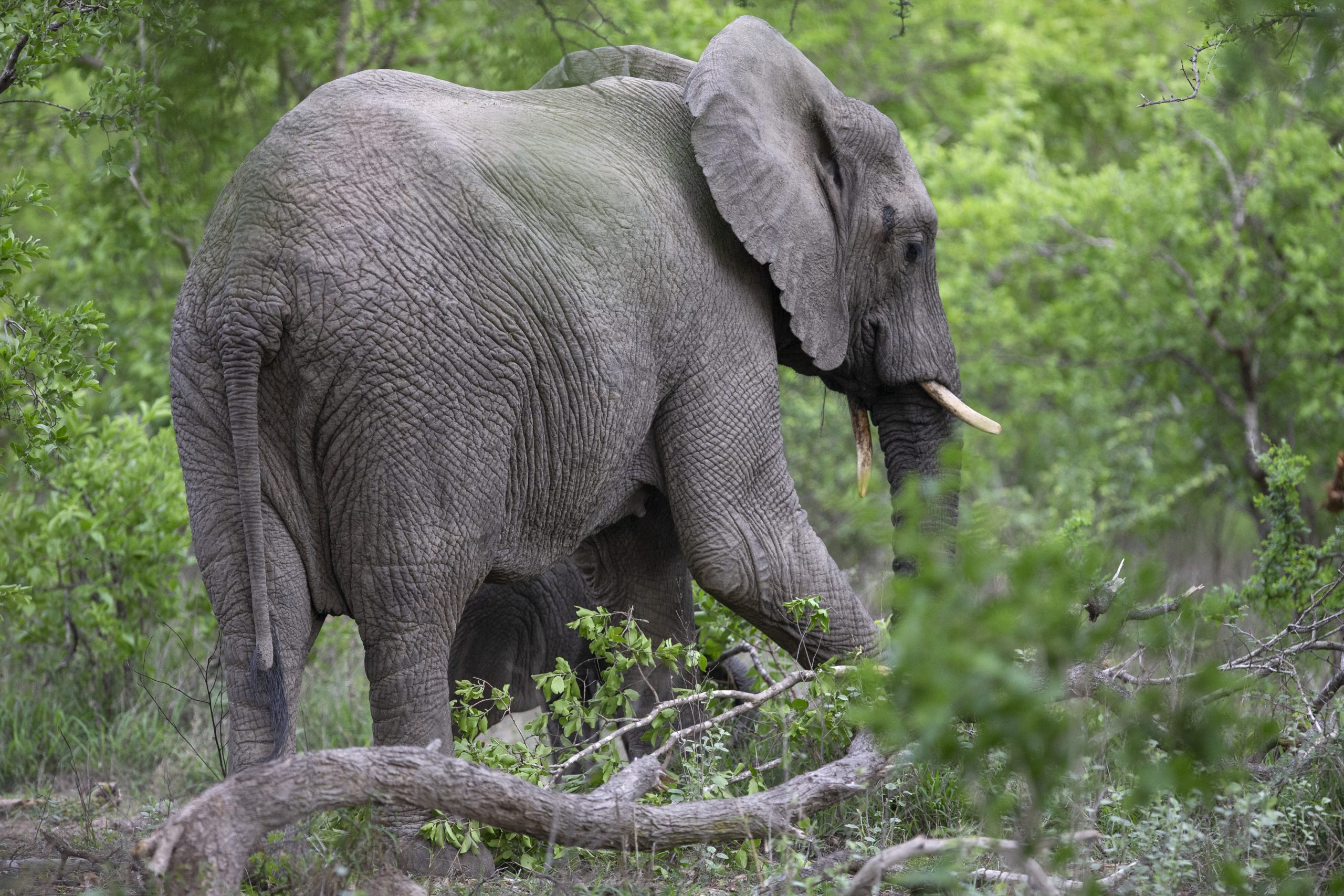
An elephant walks between trees at the Rietspruit Game Reserve in Hoedspruit on December 1, 2021. Photo by Wikus de Wet/AFP
First, the idea that reduced poaching has exploded elephant numbers feeds a myth that the Kruger’s “carrying capacity” has been exceeded and that “too many elephants” destroy big trees, especially knob thorn and marula. Incidentally, reduced poaching has had very little effect on population growth rates.
However, the myths persist because of historical thinking in conservation that idealises wild landscapes as static entities that must possess a certain unchanging proportion of beautiful old trees to other plants and animals. But wild landscapes are not farms that must strike a balance between marauding elephants and old trees. Wild landscapes the size of the Greater Kruger – now nearly 2.5 million hectares – require heterogeneous, dynamic impact, which renders concepts like “carrying capacity” obsolete. In other words, the space is technically large enough to allow elephant populations to increase naturally and engineer the landscape the way they are designed to.
By way of evidence, a 2022 scientific paper indicates that there has been no decrease in heterogeneity within the Kruger Park since the 1990s, despite elephant populations having grown at just over 4.1% per annum on average post-culling. There are approximately 30,000 elephants now and KNP management has not suggested that this is ‘too many’. A 2017 paper is similarly clear that elephants are important seed dispersal agents, able to carry seeds up to 65km away from the parent tree. They open thickets of invasive species and thin out trees that are too thickly concentrated. This creates habitats for a variety of other species to flourish. A 2019 review paper showed that “maintaining elephant numbers at a pre-determined carrying capacity level did not prevent the loss of large trees.” My conclusion on this paper at time was that “in large ecosystems, managing elephant numbers so they don’t exceed a certain threshold number is arbitrary”.
Evidence for the importance of heterogeneity undermines the usefulness of the ‘carrying capacity’ concept. Scientists Phyliss Lee, Keith Lindsay and Katarzyna Nowak say: “Much of the research community, and many managers, accept that ecosystem structure and function are not about elephant numbers but instead about elephant distribution across a landscape and in relation to plant communities.” Ian McDonald, similarly, has written that the idea of carrying capacity derived from an outdated Hwange Game Reserve management policy that had no scientific basis. Good management is, then, ultimately about dispersion and concentration. A high density of elephants in one area may result in some aesthetically undesirable impacts, but these are largely temporary.
It is true, however, that some vegetation in the Greater Kruger has been unduly affected. However, this is not because elephants are arbitrary tree destroyers. Elephant density has increased in the Associated Private Nature Reserves (APNR), for instance, due to the high number of artificial waterholes. The elephant population within the APNR grew from 1,666 in 2012 to 3,144 in 2021. Inward migrations should be anticipated if artificial water sources are opened so that each fancy lodge can offer tourists their ‘own’ elephants.
An abundance of artificial water sources also runs counter to the Kruger’s own strategy. To KNP management’s credit, their current elephant management strategy steers clear of controlling numbers and towards managing impact for maximum heterogeneity. A major strategy has been to close two thirds of the approximately 400 artificial waterpoints in order to manage the spatial distribution of elephants. The key point is that negative impact (where that actually occurs, not just where tourists perceive it occurs) is more a function of artificial waterpoint placement than of elephant density per se.
Moreover, tourist experiences of the Kruger Park are necessarily biased, as they can only see roughly 20% of the Park’s entire vegetation range from the roads. Roads themselves tend to increase the “encounter rate” between elephants and trees, a scientific way of saying that elephants whack trees that are closer to roads more than those further away. Tourist roads also tend to run along rivers and close to waterholes, which naturally maximise the game-viewing experience, but the resultant negative impact on trees is predictable and can be managed.
Second, the myth of “too many” supports the logic of ‘harvesting’ “excess”, which rationalises trophy hunting (and even culling) today. But the term “harvesting” dresses these interventions up as legitimate, scientific conservation tools. Worse, it provides sanitised language for culling. The truth is that culling elephants amounts to literal slaughter of families of sentient, long-lived beings. Elephants are so like humans in their mental and social capacities that it is highly subversive to liken them to inanimate crops that can be ‘harvested’.
Moreover, culling was implemented in the Kruger before the relationship between elephant density and large tree cover had been scientifically established. Ecologically, we now know that elephants start to disperse once they reach a certain density, and the population growth rate naturally starts to slow down. Ironically, culling prevents this threshold density being reached and caused abnormally high levels of population growth rates in Kruger; the population growth rate has since been successfully reduced (from above 6% to just above 4%) by the closure of two thirds of the artificial waterpoints.
What is clear from the culling debacle (where 14,629 elephants were slaughtered in South Africa alone between the 1960s and the 1990s) is that we destroy our own humanity by destroying elephants. For this reason, it is likely also “inhumane and illegal” under South African law. South Africa ended culling in the 1990s because it lacked scientific justification, generated international opprobrium, and caused long-lasting trauma both to orphaned elephants and to the human executioners. Or, in the words of a paper by Hennie Ltter: “We have a prima facie case not to kill elephants, as all humans have both a moral reason not to kill, as well as an absence of economic or survival reasons to kill.”
Third, the idea that there are “too many elephants” betrays an ignorance of the nature of elephants in maintaining healthy ecosystems. They are not just one modest component of a habitat – they often create that habitat, provided heterogeneity is maintained. Elephants are a ‘keystone’ species and their population health in the landscape positively affects the health of interconnected and dependent species. We should not be slaves to static subjective aesthetic preferences but instead committed to ensuring long-term, dynamic ecological sustainability. Putting elephants at the centre of that is scientifically and morally desirable.
Earlier this year, the government released an updated Biodiversity Economy Strategy, which envisages a massive revenue increase from trophy hunting (“harvesting”) of Big-5 animals. For the reasons outlined above, and others, this kind of policy thinking needs to be reversed.
Dr Ross Harvey is a natural resource economist and policy analyst, and he has been dealing with governance issues in various forms across this sector since 2007. He has a PhD in economics from the University of Cape Town, and his thesis research focused on the political economy of oil and institutional development in Angola and Nigeria. While completing his PhD, Ross worked as a senior researcher on extractive industries and wildlife governance at the South African Institute of International Affairs (SAIIA), and in May 2019 became an independent conservation consultant. Ross’s task at GGA is to establish a non-renewable natural resources project (extractive industries) to ensure that the industry becomes genuinely sustainable and contributes to Africa achieving the Sustainable Development Goals (SDGs). Ross was appointed Director of Research and Programmes at GGA in May 2020.

